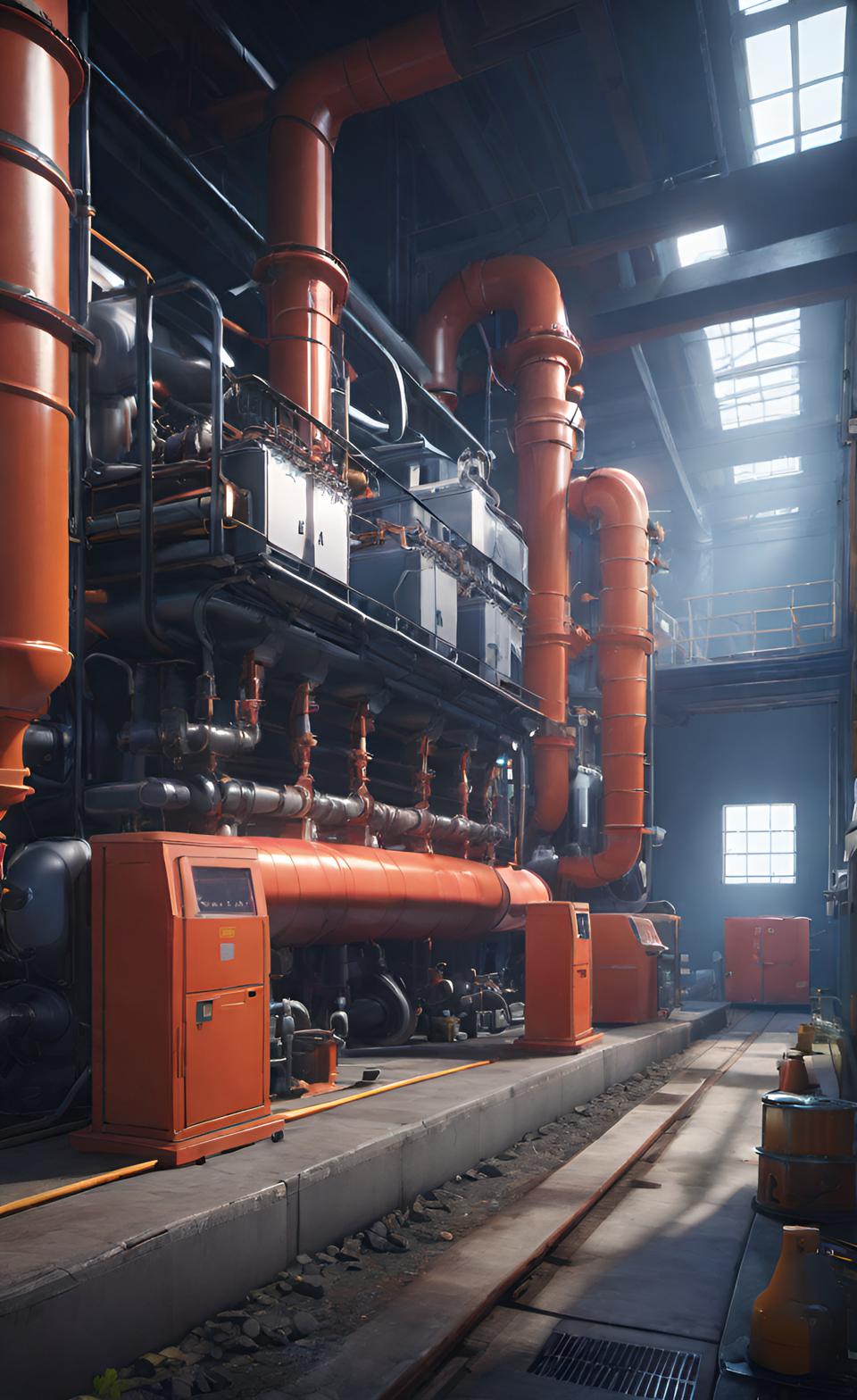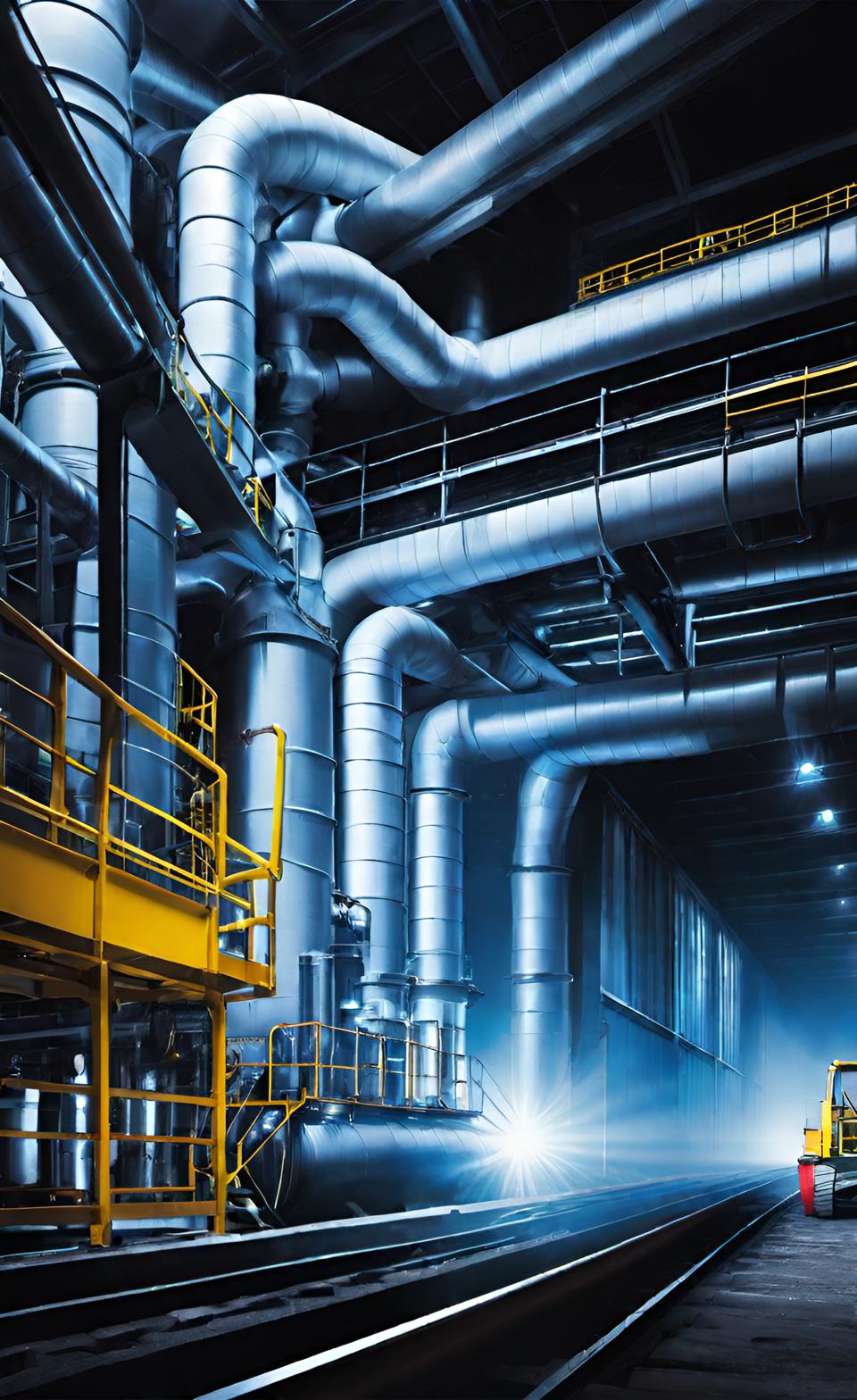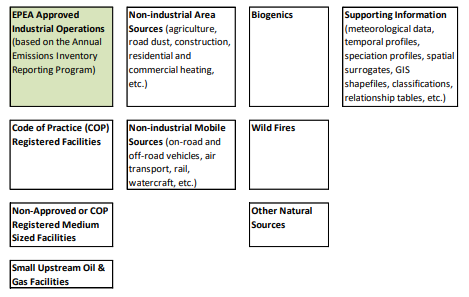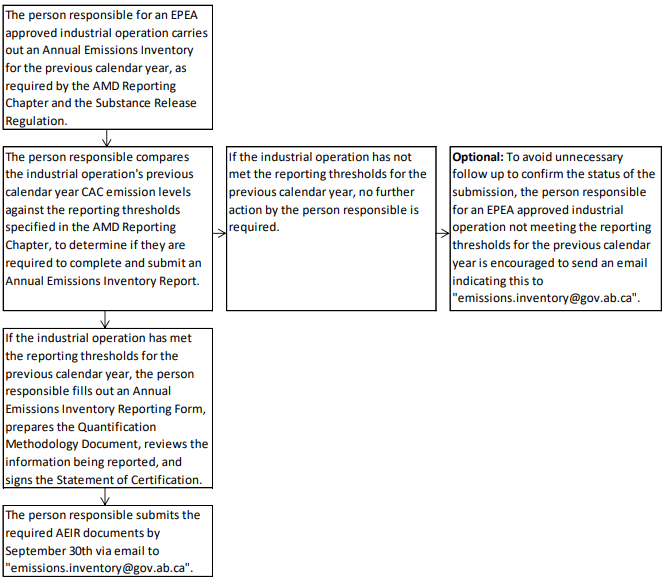- Air Homepage
- Alberta Air Quality
- Prevention of Air Pollution
Environmental Vigilance and Prevention of Air Pollution with AEIR Standard
Getting ready for your next reporting cycle? AEIR Standard 3.0, introduced in 2023, helps us use data for the prevention of air pollution. A detailed guide covers emissions quantification, submission processes, and adherence to regulatory standards in Alberta.
Here's your foundation for emissions reporting: Decoding Alberta's AEIR Standard - Are you ready for AEIR Standard 3.0, where one mistake could ruin your regulatory approval? Find out how to accurately quantify your facility's emissions, so you can meet the annual September 30 deadline while contributing to air pollution prevention.
 AEIR simplifies industrial emissions reporting for your facility
AEIR simplifies industrial emissions reporting for your facilityEdits and clarifications continue to improve this document. Newer versions help industries improve their ability to comply with reporting requirements.
The AEIR Standard is intended to guide you through the intricacies of emissions reporting and it fosters a collective responsibility to prevent air pollution.
In addition to covering a wide range of topics, the AEIR Standard streamlines industrial emissions reporting by providing comprehensive guidelines and a structured approach. You will find it useful. This first webpage covers Sections 1 to 2 of the government document.
AEIR Standard 3.0 is essential for accurate emissions reporting and air pollution prevention. Stay on top of the latest revisions and follow the detailed guidelines to ensure compliance. Maintain thorough records and use monitoring and estimations as needed. Consult experts like Calvin Consulting Group Ltd. or the AEIR Program, and read this article to reinforce your understanding.
Section 1.0 - AEIR Introduction
1.1 Aims and objectives of this standard: As required by regulations, the AEIR Standard helps approved industrial operations report their yearly emissions. This is a guide with some rules. Programs define "industrial operations" differently.
1.2 Requirements and structure of this document: The AEIR Standard helps industrial operations prepare and submit their Annual Emissions Reports (AEIRs). Three parts:
- AEIR Form, Quantification Methodology Document (QMD), and Statement of Certification (SOC).
- Step-by-step instructions and guidance are provided in the document.
- Reference to AMD Reporting Chapter, which also has enforceable requirements, marked with italicized text and identified by clauses in the form of EIS #-A.
1.3 Contents of the guidance document: In the AEIR Standard, there are various sections designed to help industrial operations report their annual emissions inventory reports (AEIRs). Here are a few important items; for details, see Table 1 of the original text.
 AEIR Standard for industrial reporting
AEIR Standard for industrial reportingWhat each section covers:
- 1 - A brief overview of the AEIR Standard's purpose, structure, contents, and amendments.
- 2 - AEIR Program Overview: Information about the reporting program, including its purpose, regulatory authority, and scope.
- 3- Information on reporting requirements, including sources, substances, emission rates, and thresholds.
- 4 - Reviewing requirements and planning are the first steps of inventory development.
- 5 - Gathering and reporting administrative information, requirements and tasks.
- 6 - Information about release points including requirements and tasks.
- 7 - Information from non-point sources: Gathering and reporting requirements.
- 8 - Additional information for non-point sources: Specific information you need.
- 9 - Gathering and reporting information about units, processes, and equipment.
- 10 - Information on air pollution control technology and equipment: Requirements for gathering and reporting it.
- 11 - Gathering and reporting normal, emergency, and upset emission limit information.
- 12 - Gathering and reporting temporal operating information: Requirements.
- 13 - Gathering and reporting source monitoring info.
- 14 - Schedule 2 Substances: Identifying Schedule 2 substances.
- 15 - Quantify Emission Rates: Identify the best methods for quantifying emissions.
- 16 - Quantifying and reporting annual actual, normal, and maximum emissions.
- 17 - Gathering and reporting other required information.
- 18 - The AEIR's quality assurance and quality control activities.
- 19 - Preparing the Quantification Methodology Document and making sure it's accurate.
- 20 - Completing the AEIR form, final review, and certification.
- 21 - Submit the AEIR: Covers the AEIR Form, Quantification Methodology Document, and Statement of Certification submission process.
- 22 - Review, notifications, resubmissions, and auditing: Information on department review, notifications, resubmissions, and auditing.
- 23 - Requirements for record keeping and confidentiality.
- 24 - Information about reporting in future years under the AEIR program.
- A - There's an optional method for quantifying PM size distributions in Appendix A.
- B - The AEIR Standard References are in Appendix B.
- C - Appendix C: Field descriptions for each worksheet on the AEIR Form.
- D - A list of common units, processes, equipment, controls for the prevention of air pollution, non-point sources, and Schedule 2 substances by sector is in Appendix D.
There are instructions and guidance in each section to make sure your emissions data is accurate and comprehensive.
1.4 AEIR Standard Version - 3.0 is outlined here and used for reporting in 2022-2024. Updates are expected in future years.
1.5 Changes from the previous version: Here are a few of the revisions in this version of the AEIR Standard:
- The publisher updated the inventory years.
- The department name and acronym have been modified.
- Typos and spelling fixes.
- Figures 2 and 3 have been updated.
- Reporting of particulate matter sizes clarified.
- How to figure out normal rates for emergency/upset sources.
- Clarified rules when annual/normal rates exceed maximums.
- Info sources added: EPEA approval and Alberta Authorizations Viewer.
- AER Facility IDs and AER Approval (License) numbers.
- Biofuels include renewable natural gas.
- Here's how to find plant capacity info.
- Retaining release points and sources in AEIR forms.
- Updated instructions for various sources, like storage tanks and mine fleets.
- Units, processes, equipment, and pollution controls.
- Methods for quantifying emissions.
- Pre-authorization rules and changing emission factors.
- Recommendations for quality assurance, control and prevention of air pollution.
- Submitting the AEIR Form and Statement of Certification.
- Current processes and URLs updated.
- It's all about making the AEIR Standard more accurate and informative.
AEIR submissions must also include specific documents, according to the revision. Stay up to date with this version so you can report emissions accurately.
2.0 Overview of the AEIR for prevention of air pollution
2.1 What the reporting program is for: Alberta's AEIR Program monitors air emissions from large industrial operations. The high level of industrialization and population growth in Alberta has led to more air pollution. This program collects detailed, high-quality data to ensure environmental sustainability and economic growth coupled with the prevention of air pollution.
Various purposes are served by the information, like tracking emissions, informing policy development, and meeting air quality standards. In addition, it supports efficient regulatory assessments and regional planning, aiming to strike a balance between economic growth and environmental protection.
2.2 Inventory of Air Emissions in Alberta: In Alberta, the AEIR Program collects air emissions data, but it's just one part of the bigger Alberta Air Emissions Inventory. The comprehensive inventory covers industrial operations, non-industrial sources (like agriculture and construction), natural sources, and more. Supporting data like weather is also included.
 Air Emissions Inventory components
Air Emissions Inventory componentsTracking all major air emissions in Alberta and within the different Air Zones is the goal, so we can understand air quality better.
2.3 Requirements for Regulatory Compliance: The AEIR Program follows the Environmental Protection and Enhancement Act, Substance Release Regulation, Air Monitoring Directive, and individual authorizations. Industrial operations have to do an emissions inventory and report it by September 30. They have to submit an AEIR if certain thresholds are exceeded.
Regulatory authorities can take enforcement action if you don't comply, which could jeopardize their approval. To ensure environmental compliance, you've got to meet these requirements.
2.4 When documents and certifications are due: The AEIR has to be submitted by September 30 of the following year, e.g., if the threshold is exceeded in 2023, the report for that year has to be submitted by September 30, 2024. To make sure emissions are reported on time, this deadline is in enforced.
2.5 Who needs to meet these requirements? The AEIR Program applies to Alberta's industrial operations. Here's how to find out if it applies to you:
- EPEA Approval: If your operation has an EPEA approval, go to the next point. If not, you're not eligible for the AEIR Program.
- Did your operation exceed emissions reporting thresholds last year? If so, you need to fill out an AEIR.
- You don't need to apply for the AEIR Program unless you have an EPEA approval.
- The AEIR Program covers a variety of industries listed on the original document.
- Under the AEIR Program, the person responsible for the industrial operation has to report. It's usually the owner/approver.
2.6 Required reporting and penalties for failure: Alberta's AEIR Program requires industrial operations to self-report. If your operation has EPEA approval and exceeded certain emissions thresholds in the previous year, you've got to submit an AEIR (Annual Emissions Inventory Report) by September 30. It's up to the person responsible for the industrial operation, usually the owner/approval holder, to determine if thresholds were exceeded.
It's also necessary to notify the authorities if your operation didn't exceed reporting thresholds. Here's how it works:
- Assess the previous year's emissions.
Check if emissions exceeded thresholds: Compare with reporting thresholds. - Fill out the AEIR documents - the Reporting Form, Quantification Methodology Document, and Statement of Certification - if thresholds are met.
- Email AEIR documents to emissions.inventory@gov.ab.ca by September 30.
- Regulators may take enforcement action if you don't comply.
- You have to self-report emissions data through the AEIR Program every year if you qualify.
 AEIR reporting flowchart
AEIR reporting flowchartMaintaining Air Quality Compliance During Ownership Changes
2.7 Changes in ownership and reporting: When an industrial operation is sold or transferred to a new owner, the original owner has to follow reporting requirements until the Director approves. After the sale, the new owner should get AEIR reports from the previous owner. If there are any records missing, the new owner should contact the previous owner. This helps continue the prevention of air pollution.
2.8 An idea of what's expected: For large industrial facilities, the AEIR Program requires self-reporting of air emissions. The person responsible for an industrial operation should already have a lot of this information from regulatory approvals, monitoring, and maintenance. They have to comply with AEIR requirements.
If monitoring isn't possible, estimations are okay. A reasonable effort means doing what's practical and necessary, and not necessarily everything imaginable. These are some examples:
- Estimate emissions if you can't monitor them all.
There's no need to install monitors on every source; estimations are fine. - Some equipment identification info may need direct examination, but you don't have to shut down operations. Mark it as missing.
 AEIR reporting made easy with Calvin Consulting
AEIR reporting made easy with Calvin ConsultingIn subsequent years, you can use the same AEIR Form, but update it with new sources, equipment, or emission rates. If there are changes in operations, normal and maximum emission rates might change.
Any authorized changes to the quantification method should be reflected. Check the examples provided in this section of the AEIR document for further help. Report your air emissions data accurately, using monitoring where possible, estimations when necessary, and keep your information current.
2.9 Getting in touch with the Program: This step in prevention of air pollution is important and helpful when everyone cooperates. If you have any questions or comments about the AEIR Program, send them to emissions.inventory@gov.ab.ca. They'll get back to you.
As an Alberta industrial facility with Environmental Protection and Enhancement Act (EPEA) approval holder, you know how important it is to report emissions accurately. Calvin Consulting Group Ltd. can help you navigate the Annual Emissions Inventory Report (AEIR) submission process smoothly.
Calvin Consulting Group: Why Us?
Our team specializes in helping industrial facilities deal with the technical side of AEIR reporting. Our years of experience in environmental consulting ensure accuracy and compliance with regulatory requirements.
We customize our services to meet the needs of each industrial facility. Whether you need help calculating emissions, preparing documents, or sticking to regulations, we're here for you.
With the AEIR submission deadline approaching on September 30, timely support is crucial. The Calvin Consulting Group is committed to helping you submit your AEIR on time and accurately.
Our guidance covers every step of this process, from reviewing requirements and planning to filling out the AEIR form and obtaining the needed certification. Our AEIRs work is thorough, compliant, and reflect your facility's emissions.
Don't go it alone. Let Calvin Consulting Group help you stay in compliance and report emissions accurately.

Calvin Consulting Group ensures peace of mind and regulatory compliance. Clean air is our Passion...Regulatory Compliance is our Business.
In January 2023, the AEIR Standard 3.0 will galvanize the annual emissions inventory reporting process.
Guidelines cover a wide range of topics, such as quantification methodologies and submission procedures. The latest updates address minor changes in procedures to increase accuracy and comprehensiveness. This document is essential to maintain compliance, prevent air pollution, and contribute to environmental sustainability.
Do you have concerns about air pollution in your area??
Perhaps modelling air pollution will provide the answers to your question.
That is what I do on a full-time basis. Find out if it is necessary for your project.
Have your Say...
on the StuffintheAir facebook page
Other topics listed in these guides:
The Stuff-in-the-Air Site Map
And,
Thank you to my research and writing assistants, ChatGPT and WordTune, as well as Wombo and others for the images.
OpenAI's large-scale language generation model (and others provided by Google and Meta), helped generate this text. As soon as draft language is generated, the author reviews, edits, and revises it to their own liking and is responsible for the content.


New! Comments
Do you like what you see here? Please let us know in the box below.